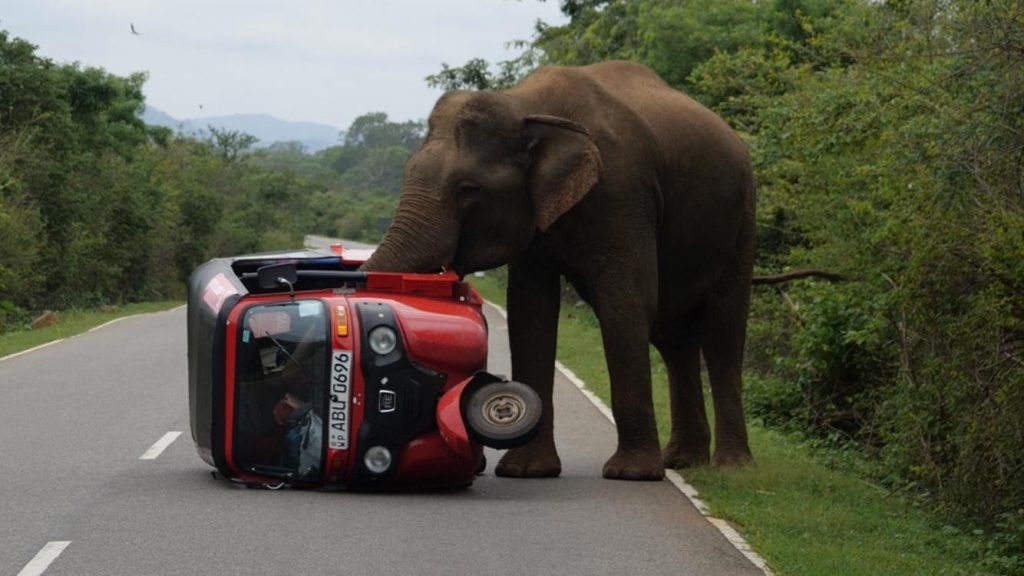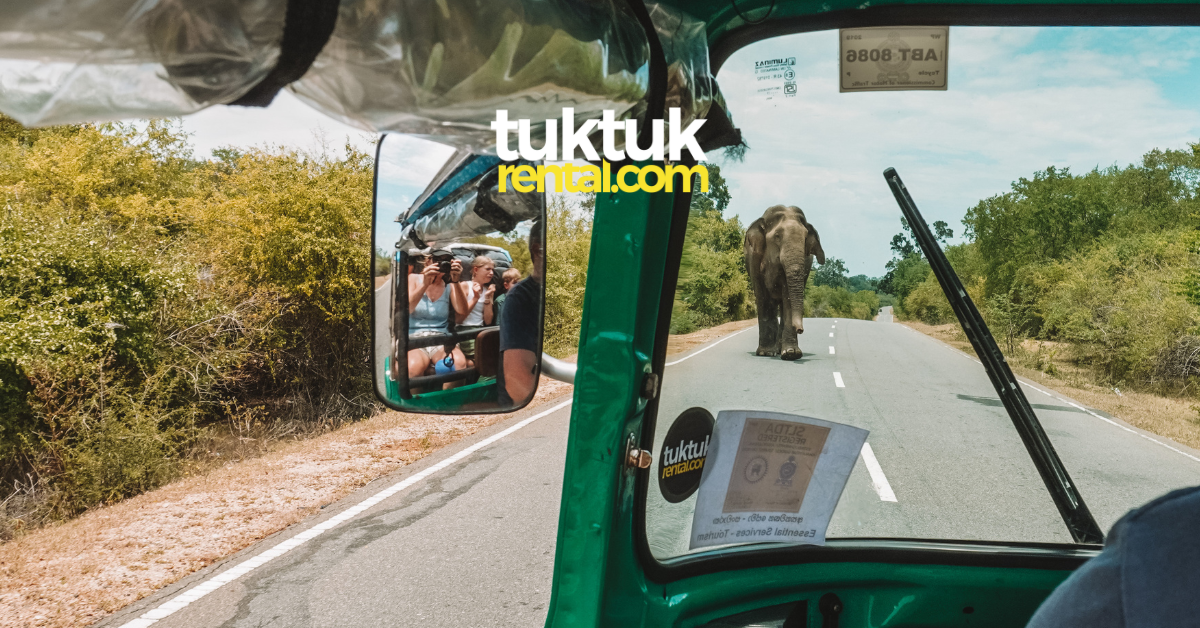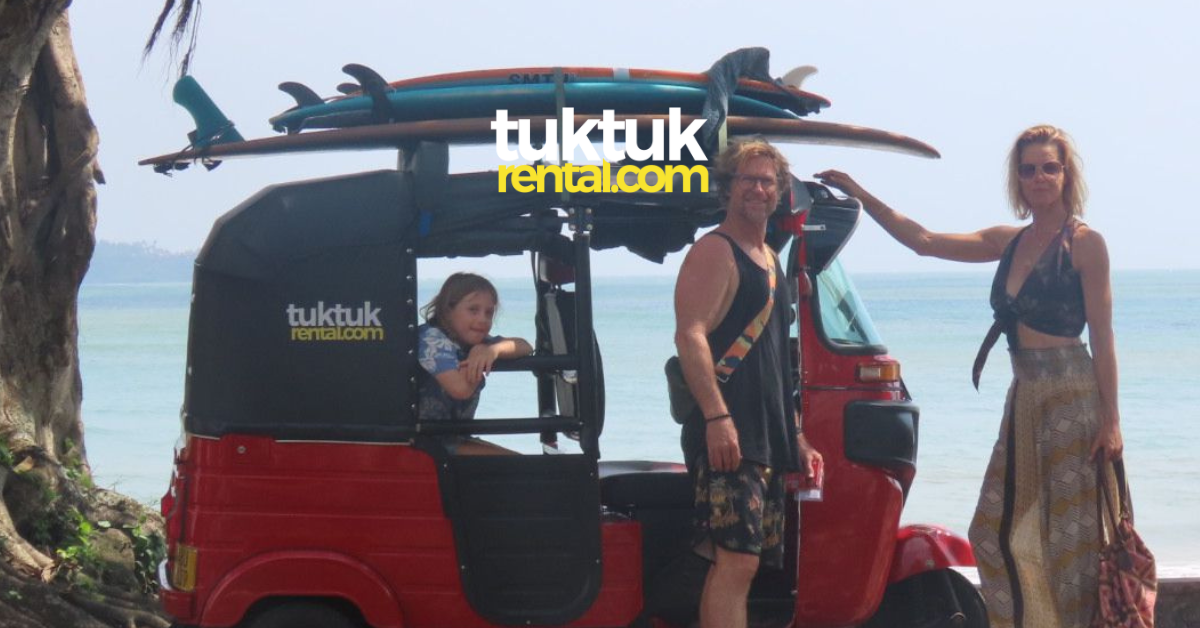Driving a tuk-tuk is great, and driving through a Protected Area (PA) is amazing. Spotting biodiversity from the comfort of your three-wheeler is a priceless experience. However, messing around with wildlife can get you badly injured, lose your tuk-tuk, or even result in severe consequences if you make irresponsible and reckless decisions!
Sri Lanka's Protected Areas
Sri Lanka is an island with over 1000 legally protected wilderness areas (PAs) spanning the length and breadth of the island across all ecological-climatic zones. Unfortunately, very few people are aware of this fact. Even for the protected area types and tiers that people do recognize, such as national parks, the majority only know of parks like Yala, Udawalawe, Horton Plains, Minneriya, Kaudulla, and Wilpattu.
Traveling Through Protected Areas
There is an extreme likelihood that you will cross one of these Protected Areas (PAs) during your travels across the island. Many of these PAs have tarred or concreted public roads running through them, but that does not mean they are safe places. Exiting your tuk-tuk within the boundaries of such PAs is a mistake made by many people. In most of these PAs, you will encounter a large number of wild Sri Lankan elephants habituated to the presence of vehicular traffic. Both locals and foreigners often stop and feed them from the safety of a vehicle, typically a bus, van, or sedan. However, this behavior is highly detrimental to both humans and wild elephants, creating a false sense of security that these elephants are “tame” and can be approached on foot, fed, and even touched.
Consequences of Interaction
Attempting to interact with these elephants could result in serious injury or even death. Additionally, there are health implications for the wild elephants. The unnatural behavior of staying in a single location all day, combined with the consumption of often polythene-wrapped, high-sugar food items, can easily lead to their death. Sri Lanka already faces significant issues relating to the Human-Elephant Conflict (HEC), and each wild elephant lost is a severe blow to the stability of the overall population.
Important Reminders
- Legal Implications: Feeding, harassing, and directly interacting with wild elephants, as well as any other examples of biodiversity, are completely illegal and in direct violation of the Flora and Fauna Protection Ordinance (FFPO). Such activities can incur hefty fines and potential penalties.
- Travel Precautions: When cutting across any Protected Area (PA) with a tarred/concrete road, do not exit or stop your tuk-tuk at any point! Only exit your tuk-tuk once you have left the Protected Area (PA). You’ll usually know once you’ve exited due to the presence of scattered settlements, electric fences, electric gates, small-scale solar power stations, and checkpoints, which normally demarcate the extent of a Protected Area (PA), though keep in mind that this isn’t always the case.
- Photography Guidelines: If you need to stop to take a picture of a wild elephant (or any example of wildlife, for that matter), do so only at a very safe and far distance. Do not approach and/or park within 100–150 meters of a wild elephant for extended periods, as it might decide to walk or run towards you, reach into your tuk-tuk looking for any food items present, or get annoyed and damage, flip, smash, or crush your tuk-tuk.
- Avoiding Bad Behavior: If you see others engaging in the above-mentioned examples of illegal, unwise behavior, do not join in with them. Just keep driving through. If they signal to you to engage in such behavior with them, politely decline and carry on your journey.
- Safety Measures: Finally, do not attempt to take selfies with wild elephants, and do not fly drones within the boundaries of any Protected Area (PA), as the latter is both illegal and extremely distressing to wild elephants and other examples of biodiversity!
Respect for Biodiversity
Remember, habituation does not equal “tame.” Be extremely careful when approaching, observing, photographing, and passing a wild elephant. A classic example of this is the mixed group of wild elephants found along the length of the B035 Byway (alternatively the Badalkumbura–Buttala–Sella–Kataragama Road), specifically the section that cuts across Yala National Park – Blocks III, IV, and V. These wild elephants have unfortunately become habituated to vehicular traffic and expect or demand food from vehicles cutting across the park. Another set of examples are the male elephants that sometimes stand on the bund of the Udawalawe Reservoir, which demarcates the southern boundary of Udawalawe National Park. While we want you to have fun and gain once-in-a-lifetime experiences, you must maintain a level of respect for Sri Lanka’s fantastic biodiversity, which will also ensure your safety!
Encountering Wildlife on Roads
Protected Areas (PAs) such as Wilpattu National Park, the Hurulu Ecological (Eco) Park, Kaudulla National Park, Minneriya National Park, the Sigiriya – Pidurangala Wildlife Sanctuary, Wasgamuwa National Park, Maduru Oya National Park, Gal Oya Valley National Park, Kumana National Park, the Sinharaja Forest Reserve, Yala National Park, and Udawalawe National Park are all wilderness areas where you can encounter wild elephants and other biodiversity on the roads that cut across these Protected Areas. Thus, when attempting such roads, you need to be extremely cautious!
Legal Restrictions
Please note, as mentioned above, that it is highly illegal to stop on roads that go through Protected Areas (PAs), and it’s even more illegal (not to mention extremely hazardous) to feed or interact with any example of biodiversity!

a tuktuk.
This page was co-authored by Sri Lankan Wildlife Conservationist and Protected Area (PA) Specialist John Wilson. If you have any further questions and/or clarifications, feel free to contact him directly via his Instagram, his username is @TUSKERTRACKINGWITHJOHN.






1 Comment
by Terri Matthiesson
thank you for this information